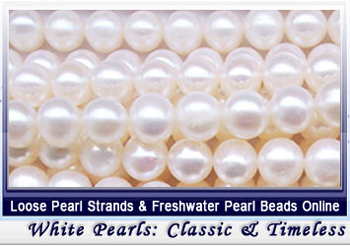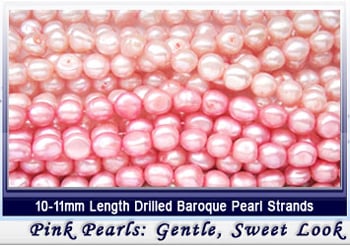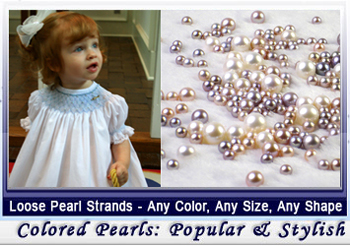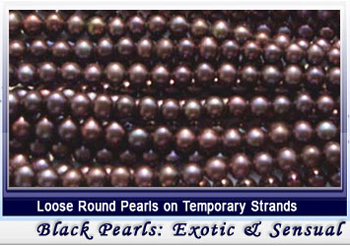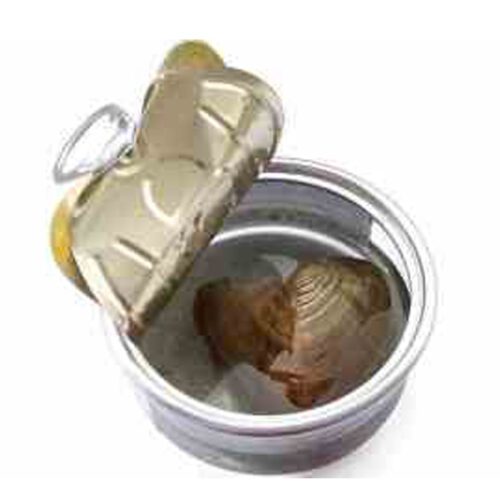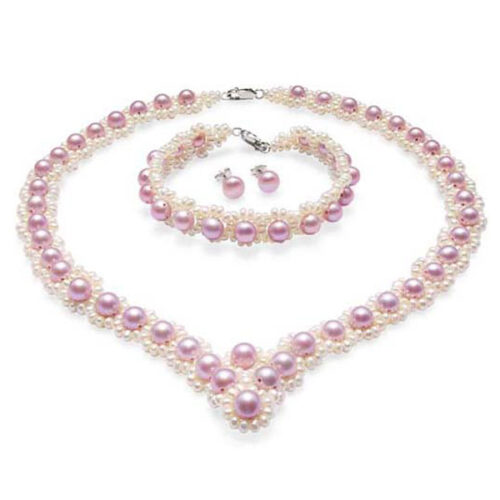Cultured Pearls and Pearl Jewelry
Direct from World’s Biggest Pearl Farms & from a Pearl Jewelry Manufacture
In order for cultured pearls to form there has to be an irritant or parasite. This will lodge itself into the tissue of the mollusk. Then a substance called nacre is released out and the creation of the pearl begins.
Nacre is a combination of crystalline and organic type substances. It builds itself in layers and circles the irritant to protect the mollusc. This incredible build-up is what forms the pearls. Japanese researchers first discovered in the 19th and 20th centuries. The first pearls were not completely round. One of the researchers focused on mabe production and produced the rounded pearls with tissue and bead insertion.
Most pearls on the market today are cultured pearls. As you may know there are saltwater pearls and freshwater pearls. Saltwater pearls come from the Akoya oyster and Japanese and Chinese producers use them for high quality jewelry. They are the hardest pearls to grow because many of them simply don’t live. Less than 5 in 10 will survive and only forty percent will produce the necessary nacre. The fact is that only 5% of pearls are considered high quality. That is a fairly low percentage. The most famous freshwater pearl is the Biwa. They are from the family Uniondaie which produces 20 different species. That is certainly a contrast to other species.
-

Wish Pearl Can – A Preserved Oyster with A Genuine Round Pearl Inside
$8.36 Add to cart -

Bridal Pearl Matching Set 925 Silver 3 Colors
$83.99 Select options This product has multiple variants. The options may be chosen on the product page
Pearls In Any Shapes
If you are buying cultured pearls you want to look for any flaws or spots in the nacre. The best pearls will have a smooth texture and appearance. The shape and size should be consistent and the color pure. You can tell a cultured pearl from a natural pearl with a simple test. If you take a pearl and rub it gently on the edge of your tooth. Cultured and natural pearls will feel rough like sandpaper. Imitations on the other hand will feel as smooth as glass because the people usually moulded or painted the surface. You should store your pearls away from other jewellery. Chemicals like perfumes could stain your pearls. Clean them with water and a soft cloth.
Today consumers can get pearls in many colors from pale creams to white rose, lilac, green, gold, gray and black. This is possible through different countries and new molluscs. The demand comes from the clients who are now demanding colored pearls. Pearls have been admired through history and even worshipped. In Persian mythology pearls are called “the tears of the gods.” For the Muslims the pearl represents Gods first act of creation.
In Chinese culture the pearl comes from the moon that is thought to give them their glow and mystery. Meanwhile the Greeks believed pearls were dew from the moon and people collected by the pearl oysters as they manoeuvred the sea at night. Orient judeged the quality of cultured pearls. They should have a soft glow and shine. The nice thing about cultured pearls is that people make them in necklaces, earrings, bracelets, rings, broaches, pins and so much more at discounted prices online.

